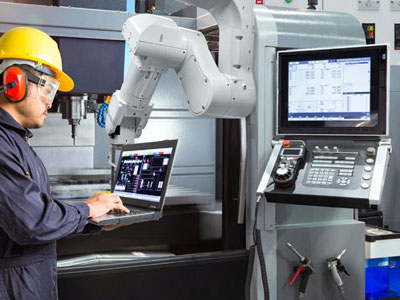Key Takeaway
Maintaining and troubleshooting industrial PCs is essential for optimal performance. Start with a routine maintenance schedule. Clean the hardware to remove dust and debris, which can cause overheating. Check all connections and cables regularly to ensure they are secure and undamaged. Update software and firmware to the latest versions to fix bugs and improve security. Monitor system performance to detect any unusual activity early. If issues arise, check the hardware for faults first, then review software logs for errors. Regular maintenance and prompt troubleshooting keep industrial PCs running smoothly and efficiently.
Regular Maintenance Practices
Regular maintenance of industrial PCs (IPCs) is vital for longevity and performance. Begin by inspecting for dust and using compressed air to clean vents and fans. Ensure all connections are secure to prevent malfunctions. Update firmware and software regularly to fix bugs and improve functionality, using manufacturer-recommended updates. Check for wear on hardware components like keyboards and displays, replacing them as needed. Backup data frequently to avoid loss due to hardware failure, using automated solutions for ease. These practices ensure your IPCs run smoothly and last longer.

Common Issues and Solutions
Industrial PCs, despite their robust design, can face common issues like overheating, power supply failures, and software crashes. Overheating is often due to blocked ventilation or faulty fans. Ensure all fans are operational and vents are clear to maintain proper airflow. Regularly clean the interior of the PC to prevent dust accumulation, which can obstruct cooling systems. Power supply issues may arise from voltage fluctuations or aging components. Using surge protectors can shield your IPC from power surges. Additionally, regularly testing power supply units and replacing them when necessary can prevent unexpected shutdowns. Implementing these simple maintenance steps can significantly reduce downtime and improve IPC reliability.
Software crashes can be due to corrupted files or outdated drivers. Regularly updating software and drivers is essential to avoid these issues. Conduct periodic system checks to ensure all software components are up-to-date. For hardware failures, inspect components for physical damage and replace them as needed. Ensuring that all connections are secure can also prevent intermittent hardware issues. By addressing these common problems proactively, you can maintain the smooth operation of your IPCs, enhancing their performance and longevity. Remember, consistent maintenance is the key to avoiding major disruptions in your industrial operations.
Diagnostic Tools
Diagnostic tools are indispensable for maintaining IPCs. Start with built-in BIOS diagnostics to check hardware health. These tools provide a preliminary check of your system’s core components. Use software tools like HWMonitor to monitor temperatures, voltages, and fan speeds in real-time. This helps you detect abnormal readings early and take corrective actions before they lead to serious issues. For storage diagnostics, tools like CrystalDiskInfo offer insights into the health of your hard drives, indicating potential failures before they occur.
Memory testing tools such as MemTest86 help identify faulty RAM modules, which can be the root cause of system instability. For comprehensive system analysis, tools like AIDA64 assess both hardware and software performance, offering detailed reports. These reports help pinpoint and address issues promptly, ensuring your IPCs run efficiently. Regular use of diagnostic tools ensures early detection of potential problems, enhancing IPC performance and longevity. By integrating these tools into your maintenance routine, you can keep your IPCs in optimal condition and avoid unexpected downtime.
Software Troubleshooting
Software troubleshooting begins with identifying the symptoms of the issue. Start by checking for recent software updates or installations that might have caused conflicts. Roll back any recent changes to see if the issue resolves. This initial step can often resolve minor software conflicts without much effort. Use built-in tools like Event Viewer to check for error logs that can provide clues about the underlying problem. These logs can help you trace the issue to specific software components or processes.
Running a full system antivirus scan can eliminate malware as a cause of software issues. For persistent problems, boot into Safe Mode to see if the problem persists, which can help isolate software conflicts. Safe Mode runs only essential system processes, making it easier to identify and fix issues. Reinstalling the operating system or specific problematic applications can also resolve deeper software issues. Regularly updating and patching software is key to preventing these problems. By following these steps, you can maintain a stable and reliable software environment for your IPCs, ensuring smooth industrial operations.
Preventative Measures
Preventative measures are vital for minimizing IPC issues. Implement a robust backup system to protect against data loss. Schedule regular software updates to ensure your systems are protected against vulnerabilities. Using surge protectors and uninterruptible power supplies (UPS) can guard against power surges and outages, safeguarding your hardware from electrical damage. Enforcing strict user access controls prevents unauthorized changes to system configurations, which can lead to system instability.
Regularly training staff on best practices for IPC usage and maintenance is crucial. Educated users are less likely to make errors that could cause system failures. Implementing these preventative measures can reduce the risk of unexpected failures and extend the lifespan of your IPCs. By taking these steps, you ensure continuous and reliable operation, keeping your industrial processes running smoothly. Remember, proactive maintenance is always more effective and cost-efficient than reactive repairs.
Conclusion
Maintaining industrial PCs requires a combination of regular maintenance, troubleshooting, and preventative measures. By following the practices outlined in this guide, you can ensure your IPCs remain reliable and efficient. Regular inspections, use of diagnostic tools, addressing common issues promptly, and implementing preventative strategies are key to maximizing the lifespan and performance of your IPCs. Staying proactive and vigilant will minimize downtime and enhance productivity, making your industrial operations smoother and more dependable. Remember, well-maintained IPCs are the backbone of any successful industrial application.
